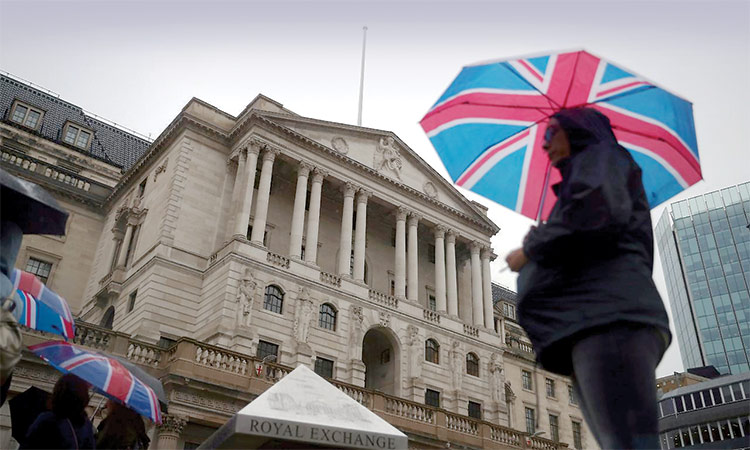OECD raises its global economic outlook for this year, cuts 2024

Picture used for illustrative purpose only.
The world economy is now expected to grow 3.0 per cent this year, up from the 2.7 per cent forecast in the June outlook of the Organisation for Economic Co-operation and Development.
But it said global growth was projected to remain “sub-par”, slowing to 2.7 percent next year -- down from 2.9 percent in the previous forecast.
“After a stronger-than-expected start to 2023, helped by lower energy prices and the reopening of China, global growth is expected to moderate,” the OECD said in its report.
“The impact of tighter monetary policy is becoming increasingly visible, business and consumer confidence have turned down, and the rebound in China has faded,” it added.
Central banks worldwide have sharply increased borrowing costs in an effort to tame consumer prices which soared in the wake of Russia’s invasion of Ukraine last year.
“We are all seeing the tightening of monetary policy working its way through our economies. This is necessary to reduce inflation, but it is painful,” OECD chief economist Clare Lombardelli said at a press conference.
The European Central Bank raised a key interest rate to a record high last week but hinted this might be its last hike, while the US Federal Reserve is expected to pause its own campaign on Wednesday.
“Inflation is projected to moderate gradually over 2023 and 2024 but to remain above central bank objectives in most economies,” the OECD said.
Inflation remains well above the two-percent targets of the Fed and ECB, and oil prices have rebounded in recent weeks. EU data on Tuesday showed eurozone inflation slowed slightly to 5.2 percent in August from 5.3 percent the previous month.
The Bank of England and its peers in Norway, Sweden and Switzerland are also making interest rate decisions on Thursday.
“Even if policy rates are not raised further, the effects of past rises will continue to work their way through economies for some time,” the OECD said.
Borrowing costs for companies and households have risen, while credit conditions have tightened, it said.
“Some countries are already seeing rising loan and credit card delinquency rates and increases in corporate insolvencies,” the OECD said.
The crisis at regional US banks in March and the fire sale of European banking giant Credit Suisse show that “risks remain” that higher rates could “produce stresses in the financial system”, the report warned.
The OECD also warned that “a sharper-than-expected slowdown in China is an additional key risk that would hit output growth around the world”.
The world’s second biggest economy has struggled this year after three years of Covid restrictions and massive debt in the property sector.
The OECD cut its outlook for China, with growth of 5.1 percent this year. It will slow to 4.6 percent in 2024, 0.5 percentage points lower than previously forecast.
While it raised its forecast for the world’s biggest economy, the United States, the OECD noted that US growth would slow from 2.2 percent in 2023 to 1.3 percent next year.
Although the US economy “has so far proved unexpectedly resilient to the steep rise in policy interest rates”, the effects of tighter financial conditions “are expected to become increasingly visible”, the OECD said.
The organisation lowered its forecasts for the eurozone, with growth of 0.6 percent this year and 1.1 percent in 2024 as the German economy struggles.
Japan’s growth outlook was raised by 0.5 percentage points to 1.8 percent for 2023 but lowered by 0.1 points to 1.0 percent for 2024.
Wall Street stocks dipped early Tuesday as markets digested a lackluster OECD forecast and Treasury bond yields pushed higher.
While lifting its growth projection for 2023, the Organisation for Economic Co-operation and Development trimmed its 2024 growth expectation to 2.7 percent from 2.9 percent in a previous forecast.
Factors cited by the OECD included disappointing activity in China and the drag from higher interest rates, following central bank actions to counter inflation.
About 20 minutes into trading, the Dow Jones Industrial Average was down 0.2 percent at 34,567.96.
The broad-based S&P 500 dipped 0.2 percent to 4,443.77, while the tech-rich Nasdaq Composite Index declined 0.5 percent to 13,644.64.
The yield on the 10-year US Treasury note climbed as markets awaited Wednesday’s Federal Reserve interest rate decision.
Adam Sarhan of 50 Park Investments said the market’s “sideways” action in recent weeks is “very bullish,” considering that Treasury yields have increased along with oil prices.
“You have a lot of macro headwinds, that would normally send stocks down and down in a very big way,” Sarhan said. “When the market can’t fall on various news, all things being equal that’s bullish.”
Agencies







